
We spend the hour with acclaimed historian Greg Grandin discussing his new book, America, América: A New History of the New World, which spans five centuries of North and South American history since the Spanish conquest, including the fight against fascism in the 1930s. He examines the U.S.-Latin American relationship under Trump, with a focus on El Salvador, Panama, Ecuador and Cuba. Grandin also has a new piece for The Intercept that draws on the book, headlined “The Long History of Lawlessness in U.S. Policy Toward Latin America.” “If the United States really has given up its role as superintending a global liberal order and the world is reverting back to these kind of spheres of power competitions, then Latin America becomes, essentially, much more important,” says Grandin. We also continue to examine the legacy of the late Pope Francis, the son of Italian immigrants to Argentina and the first pope from Latin America. Grandin shares how the Catholic Church’s involvement in the conquest and colonization of the continent impacted the pope’s beliefs.
Transcript
AMY GOODMAN: We begin today’s show with Greg Grandin, history professor at Yale University, Pulitzer Prize-winning author, whose major new book is out this week, America, América: A New History of the New World. He describes it as a, quote, “history of the modern world, an inquiry into how centuries of American bloodshed and diplomacy didn’t just shape the political identities of the United States and Latin America but also gave rise to global governance — the liberal international order that today, many believe, is in terminal crisis,” unquote.
The book spans five centuries, from the Spanish conquest to the first Latin American pope, Francis, who was the archbishop of Buenos Aires, Argentina, and just happened to die at the age of 88 the day before the book was released. The Nation has published an excerpt from America, América in a piece headlined “Pope Francis Upheld the Spirit of Liberation Theology.” Greg Grandin also has new piece for The Intercept that draws on the book, headlined “The Long History of Lawlessness in U.S. Policy Toward Latin America.” He won the Pulitzer Prize for his book The End of the Myth: From the Frontier to the Border Wall in the Mind of America.
Professor Grandin, welcome back to Democracy Now! Congratulations on the release of your book. I want to begin with that incredible moment in the White House, in the Oval Office. There is President Trump sitting next to the Salvadoran president, who calls himself a dictator, Nayib Bukele.
GREG GRANDIN: Yeah.
AMY GOODMAN: And the moment of the United States and El Salvador, what this represented in the culmination of U.S.-Salvadoran relations, even going back — and I’m sure you’re going to go back further — to the ’80s, when the U.S. supported the paramilitaries and the military in killing so many tens of thousands of Salvadorans, and now the relationship is around this notorious mega-prison, where President Trump says he no longer has control over people he sends there.
GREG GRANDIN: Yeah. Well, what struck — a number of things struck me about that encounter in the White House. One was, as you mentioned, Latin America is famous for the kind of form of political violence called political disappearance, in which people were literally just kidnapped off the street and disappeared by security forces. And back then, an element of that kind of crime was the government would deny any knowledge of it. And obviously, that wasn’t true. The government and the security forces were deeply involved in carrying out and executing the disappearances. But that deniability created another element of terror, the uncertainty where their loved ones have gone, among the relatives, among the survivors and the people who were taken. You know, government officials — people would waste their time going through labyrinth bureaucracies, asking questions, and the government officials would say, “Who knows? Maybe they went to Cuba. We don’t know.”
And what struck me was Bukele is like — there was no deniability this time, right? Trump and — Bukele was like, “We got them. We know where they are. And yeah, and we’re not going to give them back.” That kind of “f— you” impunity is a different kind of terror, a different scale — right? — that if the uncertainty of that first wave of disappearances created a kind of horror and suffering among people, this kind of performance of omnipotence: “We have them, and you can’t do anything about it.” I also was struck by the glee in which they talked about it, just the joking about it, like as if they were just talking about, you know, not even human beings. The dehumanization, that was another thing.
Let me just also say, this is a little bit — this is a little bit of a tangent, but Bukele does like to joke around with a little bit of irony — although it’s not ironic at all, because it’s true — that he’s a dictator. And, you know, when FDR visited — Franklin Delano Roosevelt visited Vargas, the president in Brazil, who was a dictator but was also building a kind of social state. He was a backer of social rights and expanding kind of social welfare to the working class. When Vargas and FDR met, there was a little protest against Vargas. Vargas whispers to Roosevelt, “They call me a dictator.” And Roosevelt whispered back, “Me, too.” And so, they were joking about being dictators, but in a completely different circumstance, in the sense that they’re building social rights, they’re building a social state, they’re expanding economic, you know, welfare states, the social rights to people, where here we have two people who are talking about themselves as dictators and acting as dictators as they dismantle what’s left of the New Deal.
JUAN GONZÁLEZ: And, Greg, of course, you’re familiar, you’ve written in the past about this history of lawlessness from the United States with regard to Latin America. And it seems to me that just the same cavalier attitude that was evinced in this discussion in the White House has been pretty much part and parcel of U.S. policy. We’re facing now, for instance, Trump talking about taking back Panama. And, in fact, there are actually more U.S. troops now in Panama — quietly, the Panamanian government has allowed some of the old military bases to open up again — as a result of the pressure from the Trump administration.
GREG GRANDIN: Yeah, and they’ll soon be in Ecuador also. Ecuador is vying to be a second El Salvador in the sense of a kind of security outpost. This is all in the context of — in a way, of losing Colombia. I don’t know if they’ve lost Colombia permanently, but a left-wing Gustavo Petro was elected president, and he was an old insurgent, and Colombia kind of no longer serving as a kind of forecastle of U.S. power in the region, and the United States now constituting El Salvador and Ecuador as these kind of places in which they’re projecting military power.
I mean, the bigger question here is, if the United States really has given up its role as superintending a global liberal order and the world is reverting back to these kind of spheres of power competitions, then Latin America becomes, essentially, much more important to the United States as a source of resources, as a security perimeter, in which being able to use certain countries as military bases becomes that much more important, as the world kind of fragments up into — fragments into these spheres of influence, Russia and China and whatnot. And so, we’ll see a lot more of that, I think, in Latin America in the coming years.
JUAN GONZÁLEZ: And I’m wondering — I wanted to ask you specifically about the role of Guantánamo, because most Americans don’t really grasp the fact that the United States is holding a military base in Cuba really against the wishes of the Cuban government still after all of these years. What allows this to continue to occur?
GREG GRANDIN: Well, what allows it to continue to occur is just absolute raw power, the power of the United States. The United States, when it took Cuba and it took Puerto Rico and the Philippines and Guam in 1898 in this war, Spanish — war against Spain, it carved out Guantánamo as a military base, as a coaling station, you know. And it had an end date, and I think that end date passed, for the least. But once the Cuban Revolution happened in 1959, the U.S. ignored it and just kept Guantánamo as its own kind of enclave within the revolutionary island.
And, of course, you know, Latin America has long been a place in which the United States, as a growing empire, has used as a receptacle to cast off its unwanted or the people that it considered kind of outside the pale of belonging to the nation. Prior to the Civil War, many people thought that the United States could avert a war over slavery by basically sending all its free people of color to Latin America, to Central America, to Mexico, to Panama, to Haiti, as a way of lessening racial tensions. That, of course, didn’t happen. In the 1990s, Guantánamo became the place where the U.S. held refugee Haitians, following that country’s coup against Aristide, in inhuman conditions. And then, of course, during the “war on terror,” Guantánamo became synonymous with a war that legal categories could no longer — could no longer kind of organize, right? So there was no term for these prisoners who didn’t belong to any — or we weren’t fighting their nations; we were fighting them. So it came up with enemy combatants, and Guantánamo became the place in which they were housed. So, there’s a long history of this, of course. And yes, it’s on the island of Cuba, and the irony of that, since Cuba is one of the few countries that have long resisted U.S. militarism.
JUAN GONZÁLEZ: And I wanted to, first of all, congratulate you on your new book, America, América, and also ask you why you felt that it was necessary to write this new history of the Western Hemisphere, especially at this time.
GREG GRANDIN: Well, I thought — there’s a lot of books that look at the influence of Latin America and the United States, you know, and El Norte, and how the Americas are really all one. But what I was really trying to do is go a little bit further and think about how the tension between, first, the British and Spanish colonial system, and, then, between Spanish Republicans and the United States, gives rise to a set of political principles that become the foundation of the global order. You know, when people think of the founding of the United Nations or the founding of the League of Nations or what — you know, what they talk about, the rules-based order, they often look to Europe. They look to Europe’s relationship with its former colonies. And that’s the histories that get written. But, you know, in many ways, the ideas that become foundational to the world after the end of World War II were created in Latin America.
When you think about it, Juan, Latin America — the United States becomes a nation, a single nation, on what they imagined to be an empty continent. Obviously, it wasn’t an empty continent. Obviously, the Spanish Empire diddled there. There was Indigenous sovereignties across the Plains and across the Rockies. And the United States revives the doctrine of conquest in order to justify moving west as fast as it can.
Latin America comes into the world, six republics already a League of Nations. They come into the world already a United Nations. They have to learn — there was nothing like that in history. Europe wasn’t like that. Europe was a collection of empires, you know, and monarchies, that were then expanding their colonial reach, sending their gunboats into the Indian Ocean and flitting around China. Latin America was a true assemblage of bounded nations, and they had to learn how to get along. They both threatened each other and they legitimated each other, and legitimated each other because if one republic can throw off Spanish Catholicism and declare itself independent, then another one could. But they threatened each other, because under the old rules of law, what was to stop Argentina from doing what the United States was doing and say, “We want the Pacific. Let’s just send our settlers over across the mountains and start taking land from the Chileans or the Mapuche or whatever”? But, of course, they weren’t going to do that. They had to figure out a new theory of sovereignty, a new way of thinking about how nations live together.
And one of the first things they came up with is the premise that nations aren’t necessarily inherently competitive. They critiqued both the United States’s doctrine of conquest, and they critiqued the Old World’s balance of power, the presumption that the way you will achieve stability and stasis is by each nation or empire pressing their interests, and that creates a kind of countervailing force. They thought that was inherently unstable and would always lead to war. What they came up with was a vision of internationalism in which the first principle was that nations shared a kind of common purpose, a shared set of interests, and that they can work together cooperatively through diplomacy.
They also came up with the idea that the boundaries of the old colonial system were the boundaries that they were going to accept. They may not be perfect. They may have been imposed by the colonial system. But that’s what we have. There’s no frontiers. We’re not going to be pushing. And now, in many ways, this was a kind of an ideal type of vision. There was plenty of wars in Latin America, particularly in the 19th century, and skirmishes. You know, Brazil wanted rubber, and that was in Peru. And there was lots of, you know, water skirmishes. But all of those skirmishes were negotiated under the premise that the boundaries were real, that the wars of conquest and wars of aggression were illegal. And all of these ideas are what eventually makes it into the United Nations Charter.
AMY GOODMAN: Greg Grandin, I wanted to ask you, follow up on you mentioning Argentina and also follow up on the pope. And it goes to a major theme in your book. Democracy Now! broadcast from Buenos Aires for several days. We followed the Mothers of the Disappeared in the Plaza de Mayo in the — the women who lost their children and grandchildren, demanding to know where they were. And you follow the position of the Catholic Church throughout Latin America, an extremely conservative force, but also the liberation theology, that was so important, and they were counter to each other, whether we’re talking about the church allying with the U.S.-backed regimes in Guatemala, in El Salvador. In El Salvador, of course, Archbishop Romero was gunned down March 24th, 1980. Argentina, that is where Pope Francis was from, the first Latin American pope. He was there during the Dirty War, from '76 to ’83. And I know there's controversy around — it’s quite murky what happened then. And what his role was and his relation to liberation theology at the time, could you go into this?
GREG GRANDIN: Well, yeah. I mean, Pope Francis, in many ways, was a quintessential Latin American. He was born during an era in which social movements, labor unions and peasant leagues were entering the public sphere, demanding social rights. In his case, he grew up under Peronism. I don’t know whether — I don’t know his position on Perón. I don’t know whether his family was Peronist. I have no idea. But he certainly was immersed in that kind of — you know, the bursting into the public sphere of the plebeian. And he was a priest through the Dirty War, as you said, and through all the turmoil of the 1970s. And there is a murky period, and there’s accusations and counter-accusations. And it seems as if most of the forces of the left have — you know, the question was whether he did enough to protect other Jesuits as the head of the Jesuit order in Argentina, against the dictatorship.
AMY GOODMAN: Particularly the story of two priests?
GREG GRANDIN: And particularly, yeah, two Jesuit priests. And one, to his dying day, believed that Saint Francis — Saint Francis — that Pope Francis gave him up and —
AMY GOODMAN: Named for Saint Francis of Assisi.
GREG GRANDIN: Yeah, named for Saint Francis. And the other priest forgave and said, “No, I believe he did all he could to protect us as much as he could.”
He wasn’t a liberation theologian. In fact, many thought he was conservative. And there was some talk when he was voted pope that he was picked because he would serve as a counterforce to the political left, which at that time, if you remember, was Chávez and Kirchner in Argentina, and, you know, it was a very strong movement in Latin America in the middle of the — in the first decade of the 2000s.
But, you know, history has this way of, you know, doing the unexpected. And he turned out to be quite a humanist, progressive pope, particularly when placed within the larger perspective of the religious schism between conservative Christianity, which was on the rise, in which there’s alliances between conservative Catholics and dominionist evangelicals that want to basically take over the political sphere — and seem to be doing a pretty good job of it in this country and elsewhere — and that wing of the Catholic Church that still imagines itself as emancipationist, as liberationist, as egalitarian. And he obviously sided with that wing, with the liberationist wing, in his pronouncements, in his very being, his just — one of his last acts was calling for a ceasefire in Gaza, which The New York Times didn’t bother to mention in its obituary, which is interesting, and which itself —
AMY GOODMAN: Sunday, on Easter Day.
GREG GRANDIN: Yeah, which was amazing. So, you know, I mean, it was the same thing with Óscar Romero. When Óscar Romero was picked to be bishop of El Salvador, he was picked because they thought he was conservative. They thought he would defend the status quo. You know, the landed class was very happy with Óscar Romero. And the experience of living in history has the tendency to radicalize people sometimes. And sometimes it radicalizes them in the right direction, in the more humanist direction. And that happened with Óscar Romero, and it happened, I think, with Francis.
AMY GOODMAN: And he dies, right before, giving that speech, which is broadcast throughout El Salvador, Archbishop Romero, directly addressing the Salvadoran military — sadly, the U.S.-backed Salvadoran military — saying, “I urge you, I” —
GREG GRANDIN: Yeah.
AMY GOODMAN: — “beseech you, I demand you put down your arms.”
GREG GRANDIN: Yeah, I mean, it’s quite a heresy — right? — to order your military not to obey their officers.
JUAN GONZÁLEZ: Greg, I wanted to ask you — this debate between the humanist and elitist and conservative wings of the Catholic Church, as you note in your book, has a long history. And you’ve spent quite a bit of time talking about the 16th-century debates between two Dominican priests, Bartolomé de las Casas and Francisco de Vitoria. What was the substance of that debate, and what’s its importance historically, especially in terms of the impact that the Native presence on America had on European thought?
GREG GRANDIN: Yeah, well, the book does start with the conquest, and it starts with the conquest in all of its horror and all of its suffering. I mean, we’re talking — some demographers call it the greatest human mortality event in history. They estimate that there were probably about 90 million people living in the Americas, and within a century, 90% of them were gone. And, you know, Spanish Catholicism, when the Spanish Empire arrived and claimed dominion, claimed sovereignty, they knew they were presiding over a populated land. And it sparked a debate among the theologians about how to justify dominion. You know, the reconquest of Iberia, the driving Muslims and Islam off of Iberia, was justifiable because —
AMY GOODMAN: Spain.
GREG GRANDIN: What’s that?
AMY GOODMAN: Spain.
GREG GRANDIN: Spain. Spain, yes. Iberia, Spain — was justified because they claimed that Spain was Christian before Muslim or Islam arrived, and therefore, what they were doing was just taking back land that had been taken from them. But they couldn’t make that argument in the conquest — right? — because Native Americans hadn’t known Christ, and therefore, they couldn’t deny Christ. And so, they had to come up with a new justification for why Spain had the right to presume sovereignty over the Americas.
And there was a small group of critics, including de las Casas, including Francisco de Vitoria — most of them were Dominicans, also Franciscans — that began to argue that you couldn’t find any basis of legitimacy. You certainly had no legitimacy to enslave them. And there emerged — in the face of the horror of the conquest and all its unimaginable suffering, there emerged a critique, a quite cohesive critique, against conquest, against slavery, almost — a critique that almost went to the point of pacifism, and a critique that insisted that all humanity was one. Bartolomé de las Casas is famous for a line, “All humanity is one.” The actual correct English translation was something similar, “The whole human lineage is one,” meaning lineage from Adam and Eve. But he insisted on the equality of people. There was no difference between Native Americans and Europeans, in his mind. And this is the foundation, I argue, of modern political thought, and particularly his rejection of the doctrine of conquest.
And now, why that’s important — and I kind of trace that out through the book, and this — by no means does it ameliorate any of the brutality of the conquistadores and what they did and the enslavement of Native Americans and that greatest human mortality event in human history that I mentioned earlier. But it did create and consolidate a pole within the Catholic Church that continued, an emancipationist, abolitionist pole that continued. And why it’s important, it’s important for a couple of reasons. One is, it was important for the nature of the Spanish American — Spanish Empire within the Americas, which I can come back to, but later on, when Spanish American Republicans begin to break from Spain and set up their own independent nations, and then have to start contending with the United States, which is reviving the doctrine of conquest to justify its expansion west, these Latin American intellectuals and political leaders had already at their disposal a fairly coherent critique of conquest, a fairly coherent critique of slavery, that they then — that what have been applied to Spain, they then applied to the United States. And it’s that tension, and it’s that kind of persistence of this ethic, that becomes the foundation of the international order.
Now, I’ll also say, the other thing that’s specific about the Spanish Empire is that the Spanish Empire made no — the Spanish Empire knew it was an empire over people. Native Americans were the main thing. They were the people who extracted the wealth out of the Americas and created the world’s first universal currency. But they were also the center of Spanish moralism. You know, what the Native Americans were, as they were defined by theology, is what justified the Spanish Empire.
Now, when you jump ahead a couple of centuries and you get to British colonialism, there’s no discussion about Native Americans. There’s no discussion about, you know, the justification of how to justify colonialism. In fact, the London Company in 1607, when they were sitting around, they had a meeting, and they said, “Well, maybe we should — maybe we should issue a document that justifies Jamestown and justifies what we want to do in New England.” And, you know, they have this debate, and they’re fully aware that for a century the Spanish have been debating this for a year — for a century. And they basically come to the conclusion, “You know, the Spanish priests, the Dominicans and the theologians have been debating this for a century, and they still can’t come up with a workable justification for Spanish conquest, so maybe it’s better we don’t say anything at all. We just keep our mouths quiet and just do it.” So, that evasion of responsibility is a major strut in the book.
AMY GOODMAN: We’re going to break and then come back to this discussion. I want to talk about the role of Latin America in fighting fascism, from the ’30s until now. And also, I want to ask you about the radical journalist Ernest Gruening. Greg Grandin is our guest, history professor at Yale University, Pulitzer Prize-winning author, whose new book is America, América: A New History of the New World. Stay with us.
[break]
AMY GOODMAN: “Las Tumbas” by Puerto Rico’s Ismael Rivera. This is Democracy Now!, democracynow.org. I’m Amy Goodman, with Juan González.
We’re spending the hour with history professor from Yale University, Pulitzer Prize-winning author, whose book is out this week, America, América: A New History of the New World — professor Greg Grandin is our guest.
So, let’s talk. We talk about Orbán in Hungary. We talk about Holocaust. We talk about those who fought fascism. But it isn’t as much talked about, those who fought fascism in Latin America, and its key role, and what the United States, and especially those who are fighting the authoritarian tendency, can learn from our southern neighbor.
GREG GRANDIN: Well, Latin America had the good fortune of getting to fight fascism just as the New Deal was consolidating in the United States, and a shift in the way — away from intervention and a shift away from Washington defending U.S. capitalists and U.S. investment at all costs. So, FDR had a much more eclectic approach to Latin America, and basically he gave the left room to maneuver in Latin America.
I mean, Spain, in many ways, a lot of grand strategists were afraid that, basically, the Spanish — the kind of conflict that you saw in Spain between Franco, representing a Spanish nationalism, Catholic nationalism, allied with Mussolini, allied with Hitler, and fighting kind of more liberal currents within — liberal and radical currents within Spain, was basically just a preview of a conflict that would eventually drift across the Atlantic and take over all of Latin America, because the sociology was very similar — servile peasants, large landed landowners, you know, militarism, a kind of conservative Catholic hierarchy. Many people saw in the Mexican Revolution a kind of mirror of the Spanish Civil War. And many theorists felt Latin America could go either way. And this isn’t even — this isn’t even talking about the influence of Germany and Japan and Italy within Latin America. So, Latin America was really on the knife’s edge in the 1930s.
And the New Deal, basically — and it’s particularly the left-wing members of the New Deal who were very much interested in Latin America, worked very hard to give space to social democrats and create a kind of really bulked liberalism to a robust conception of social rights and material improvement in people’s lives as a way of countering fascism. Like, they didn’t beat fascists by just calling them fascists; they beat fascism by offering an alternative. And that alternative was some form of socialism or some form of social democracy or some form of social liberalism. And in one country after another, this kind of, you know, variations on social democracy come to power and ally with the United States. And by the time the war starts, Latin America is pretty much — with the kind of exception of Argentina, is pretty much allied with the United States behind Washington.
So, when FDR went to war in 1941, he rallied not just his nation, he rallied the whole hemisphere. The United States really — and Latin America was indispensable to the United States. The United States didn’t have to fight one battle for resources, because it had Latin America. And then, Brazil, with that bulge that goes into the Atlantic, was a major transport route, that Roosevelt called it the “Atlantic trampoline,” because the planes would land in Natal and then go straight off — then go bounce over to North Africa. And an amazing amount of war material made it to Europe through that route. So, Latin America, in many ways, both materially and ideologically, was key to fighting fascism, both as part of the war, but then internally fighting the fascists within their own countries.
JUAN GONZÁLEZ: Well, Greg, there were, as you mentioned — you mentioned Argentina. Clearly, Juan Perón’s era was one that was at least sympathetic to the Nazis. And also, the Trujillo dictatorship was — had a lot of sympathies for — certainly for Franco and for fascism. Trujillo at one point had the assassination of a Spanish Republican, Galíndez, the infamous Galíndez case. He was assassinated at Trujillo’s orders in the United States. So there was a current, a fascist current, that eventually led to many Nazis settling in places like Argentina and Brazil after the war.
GREG GRANDIN: Yeah, absolutely. And that’s what I mentioned, that in many ways, people — the fear was that all of Latin America would become Spain, that there would be a Spanish Civil War throughout the whole of Latin America between the forces of progress and the forces of fascism. And that didn’t happen. And, you know, in most places — in many places, it’s because democrats and social democrats came to power. In other places, like the Dominican Republic, with Trujillo, it’s because they saw which way the winds were blowing, and they got on board with the Allies.
And then, after the war, as you said, it does become a kind of — in some ways, a continuation of World War II. Many socialists thought that the fight against fascism didn’t end with the dropping of the atomic bomb or European victory over Germany, that now that fascists were defeated in Europe, the fascists at home had to be defeated — the Trujillos, the Somozas, the Batistas. You know, in the Caribbean, they created the Caribbean Legion, which they saw in — you know, they didn’t see it as like looking ahead towards the Cold War. They saw it as a continuation of World War II, that we’re going to build a Caribbean Legion, and we’re going to take out Trujillo, we’re going to take out Somoza, we’re going to take out Batista and all the little Hitlers that are still kind of, you know, populating Latin America. And, of course, that didn’t happen.
What happened was that the Cold War shifted the terms of debate, and the United States shifted its support away from social democrats and the idea that democracy and development went hand in hand, towards an idea that order and stability and development went hand in hand, and began shifting all of its surveillance activities away from fascists and towards communists and towards the left. And, of course, the irony is that during World War II, the United States invested all of these countries with enormous capacity, military capacity. There was a lend-lease program in Latin America, where Chile got military equipment, and Brazil got military equipment. And after the war, those weapons were turned on the left.
There’s no better example of this than in Chile in 1948. Chile, a Popular Front government was elected in 1947, but then there was a militant strike in 1948, a miner strike in 1948. And the government turned from the kind of ethos of the Popular Front to putting down the miners’ strike and basically mobilizing airplanes and military warships to destroy and occupy large portions of northern Chile. And involved in that was a young military officer named Augusto Pinochet, who began rounding up strikers and putting them in a prison camp in northern Chile. So you see how all this military weaponry that was — so, the line between fighting and facilitating fascism in Latin America was always very fungible.
JUAN GONZÁLEZ: And, Greg, we have only a minute or two left, but I wanted to ask you about the Latinization of the United States. There’s over 62 million people of Latin American descent living in the United States today. How much is this presence a part of the history that you write about?
GREG GRANDIN: Well, I don’t go in — well, the book was long enough, so I couldn’t go too far into the migration question. But certainly, and they bring with them the same kind of polarization, same kind of conflicts. I mean, you know, they revitalized union movements in Nevada, in Los Angeles. You know, when Latin Americans, they come to the United States, they don’t think that democracy means just individual rights. They believe in things like healthcare. They believe in things like public education.
But then, on the other hand, there’s also a group of immigrants that come fleeing countries that they consider have gone too far to the left. And they’ve created their headquarters in Florida, right? Like, you know, what we thought was the waning influence of older generations of right-wing Cubans has been reinvigorated by waves of Hondurans and Venezuelans that imagine themselves fleeing left-wing tyrants, Nicaraguans, and so it’s contributed to the turning of Florida into this laboratory of Trumpism and headquarters of a — and Mar-a-Lago as a kind of headquarters of a pan-American Trumpism, pan-hemisphere Trumpism.
AMY GOODMAN: What shocked you most in researching this, oh, 700-page epic work?
GREG GRANDIN: Oh, well, I guess what shocked me most — well, didn’t — well, what I was so surprised with was how the Good Neighbor — we know “the Good Neighbor policy” as a phrase, associated with Franklin Roosevelt as his treatment of Latin America. But it was also the phrase that they used to get out the vote in his 1936 reelection. And it became a kind — the Good Neighbor Leagues were set up as a counter to the Liberty Leagues, explicitly anti-fascist. They were meant to embody a certain kind of cultural pluralism and acceptance of the diversity of the nation. And they were understood explicitly as an alternative to the white supremacist Liberty Leagues. And they basically delivered the vote to Roosevelt. He won 20 million votes. He won more votes —
AMY GOODMAN: Ten seconds.
GREG GRANDIN: — than any other human being in history up until that point. And he did so running on a policy of social democracy.
AMY GOODMAN: Greg Grandin, our guest for the hour, history professor at Yale University, Pulitzer Prize-winning author. His new book, America, América: A New History of the New World. I’m Amy Goodman, with Juan González, for another edition of Democracy Now!
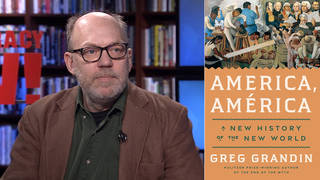
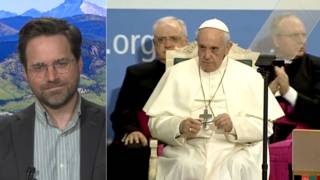


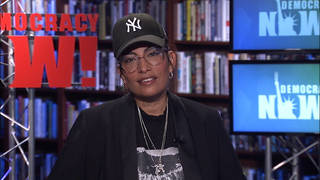
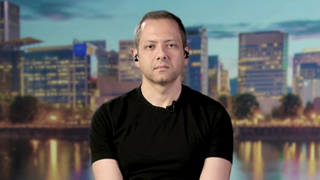

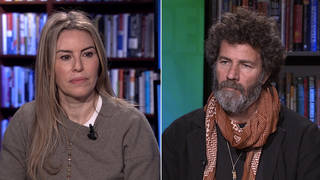
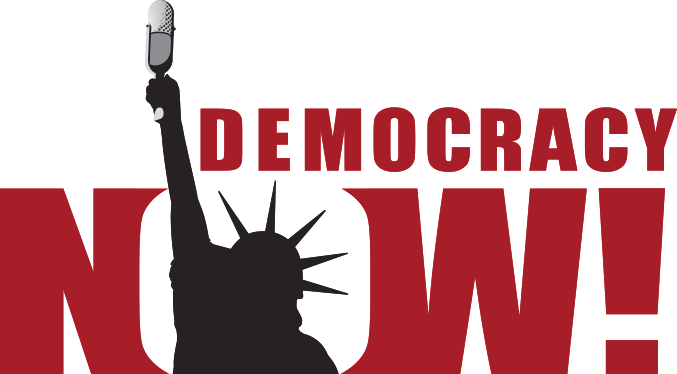
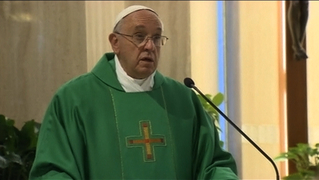

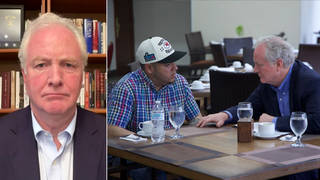
Media Options